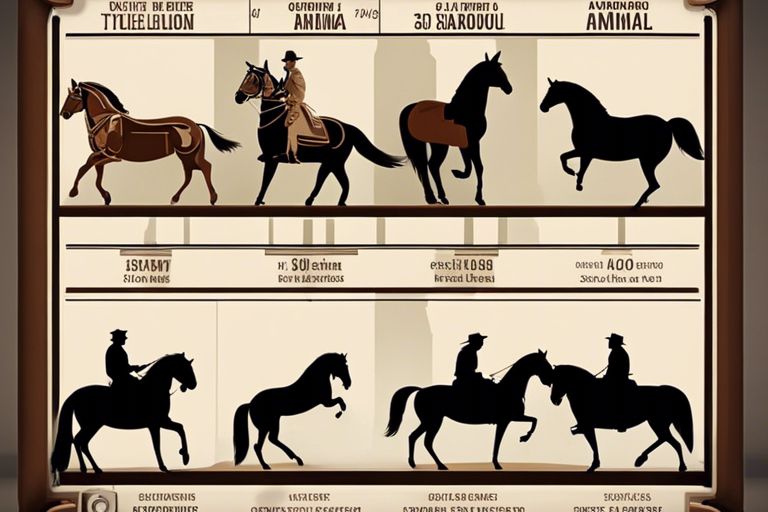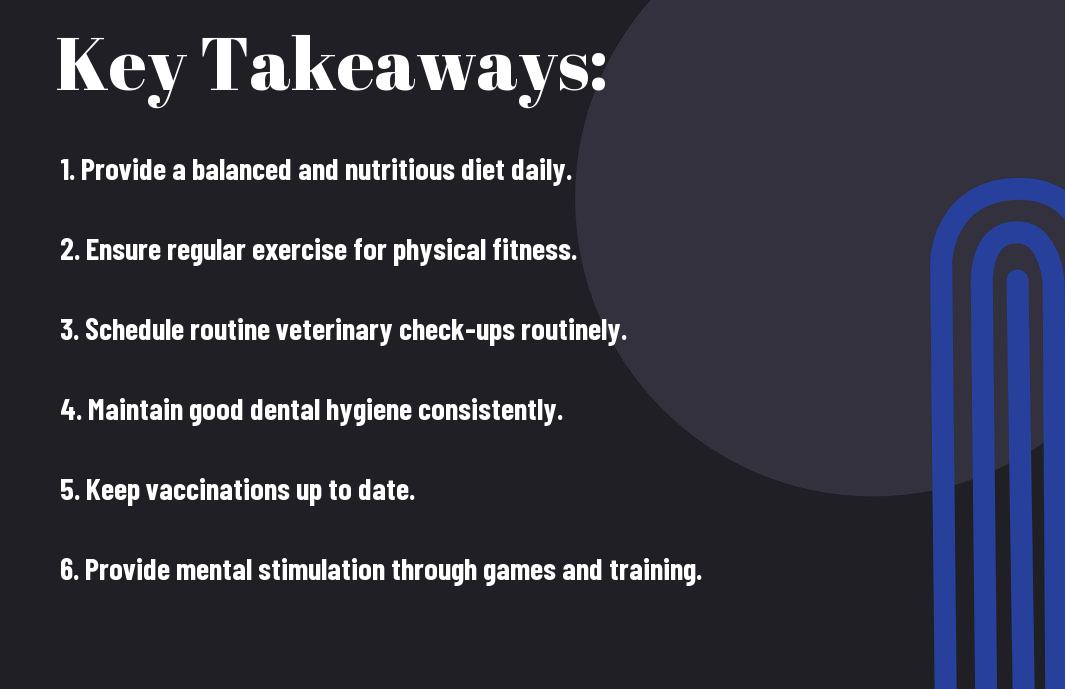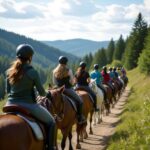Whispering softly to a horse can create a powerful bond and establish trust between you and these majestic animals. In this blog post, you will discover the techniques used by horse whisperers to communicate effectively with horses and gain their cooperation. Learn from success stories of renowned horse whisperers like Monty Roberts, and unlock the secrets to connecting with horses on a deeper level. Whether you are a beginner or an experienced rider, these insights into the art of horse whispering will inspire and empower you in your journey with these magnificent creatures.

The Fundamentals of Horse Whispering
Building Trust with Horses
With horse whispering, the key foundation is building trust with these magnificent animals. Horses, much like humans, thrive on trust and mutual respect. To earn a horse’s trust, you must first approach them with calmness and confidence. Ensure your body language is relaxed and open, showing the horse that you are not a threat. Take your time to establish a connection and build rapport before moving on to any training.
Reading Horse Body Language
One of the most crucial aspects of horse whispering is reading horse body language. Horses communicate primarily through body language, and as a horse whisperer, it is crucial to understand and interpret their cues. Pay attention to their ears, eyes, tail movement, and overall posture to gauge their mood and emotions. By observing and responding to their body language, you can establish a deeper connection and communicate effectively with the horse.
Whispering to a horse involves speaking their language and forming a bond based on trust and understanding. By listening to what the horse is telling you through their body language and responding appropriately, you can earn their trust and achieve remarkable results in your interactions.
Communication Techniques
It is vital to master various communication techniques to become skilled in horse whispering. Horses are incredibly attuned to non-verbal cues and can respond to even the slightest signals you give them.
Vocal Cues and Whispers
On your journey towards becoming a proficient horse whisperer, understanding how to use vocal cues and whispers effectively is crucial. **Your** voice can convey a range of emotions and intentions, so be mindful of the tone and volume **you** use when communicating with **your** horse. Soft whispers can be soothing, while sharp vocal cues can get **your** horse’s attention.
Body Language and Posture
To establish a deeper connection with **your** horse, paying attention to **your** body language and posture is key. **Your** body conveys a wealth of information to **your** horse, so **you** must be aware of **your** movements and gestures. Maintaining a calm and confident posture can help **you** gain **your** horse’s trust and respect.
Posture tip: Keep **your** body relaxed but upright, showing **your** horse that **you** are in control and ready to lead.
Energy and Intention
Language. When interacting with horses, **your** energy and intention play a significant role in the outcomes. **Your** horse can sense **your** emotions and intentions, so it’s vital to approach **your** interactions with positive energy and clear intentions. **Your** horse will respond to **your** energy, whether it’s calm and reassuring or anxious and uncertain.
Vocal cues are vital in conveying **your** intentions accurately, so practice using **your** voice effectively to communicate with **your** horse.

Establishing a Connection
Once again, the key to successful horse whispering lies in establishing a strong connection with the horse. By building trust and understanding, you can create a bond that will allow you to communicate effectively with the animal.
Approaching Horses with Confidence
Approach horses with confidence and calmness. Your body language should convey assurance and respect. Horses are highly sensitive to your energy, so approaching them with a sense of calm confidence will help put them at ease.
Using Touch and Gentleness
Any physical contact should be done with a gentle touch. Use your hands to stroke the horse’s neck or back in a soothing manner. This tactile sensation can help the horse relax and begin to trust you.
Understanding how to use touch effectively is crucial in establishing a connection with the horse. By approaching with gentleness and respect, you can show the horse that you are a friend, not a threat.
Mirroring Horse Behavior
On some occasions, mirroring the horse’s behavior can help establish a connection. Pay attention to the horse’s body language, movements, and demeanor. By mimicking these actions, you can communicate on a deeper level and build rapport with the horse.
The ability to mirror the horse’s behavior can be a powerful tool in building trust and understanding. By connecting with the horse on its own terms, you can create a positive and effective relationship.

Overcoming Fears and Phobias
Now, when it comes to working with horses, it’s imperative to understand and address their fears and phobias. This is crucial for building trust and developing a strong bond with your equine partner. By identifying these concerns and implementing the right techniques, you can help your horse overcome their anxieties and become a more confident and willing companion.
Identifying Horse Fears and Phobias
An important aspect of horse whispering is being able to recognize signs of fear or phobias in your horse. These can manifest in various ways, such as through body language, vocalizations, or avoidance behaviors. **Understanding what triggers these reactions in your horse** is the first step towards helping them conquer their fears.
Desensitization and Counterconditioning
Any fears or phobias your horse may have can be addressed through desensitization and counterconditioning techniques. **Desensitization involves gradually exposing your horse to the source of their fear in a controlled and safe environment**. This process helps them become accustomed to the trigger and learn that there is no real threat associated with it. Counterconditioning, on the other hand, involves pairing the feared stimulus with something positive, such as rewards or praise, to change the horse’s emotional response.
Desensitization and counterconditioning are **effective methods for helping horses overcome their fears and phobias**. Patience, consistency, and sensitivity to your horse’s reactions are key when implementing these techniques. It’s important to progress at your horse’s pace and ensure they feel supported throughout the process.
Building Confidence in Horses
Building confidence in horses is a fundamental aspect of horse whispering. By instilling trust and reassurance in your horse, you can help them develop a strong sense of self-assurance and courage. **Encouraging your horse to face their fears gradually and rewarding their bravery** can significantly boost their confidence levels over time. Consistent training, positive reinforcement, and patience are imperative for nurturing confidence in your equine companion.
On your journey to overcome fears and phobias with your horse, remember that **each horse is unique and may require a customized approach**. What works for one horse may not work for another, so it’s crucial to pay attention to your horse’s individual needs and reactions. With dedication and understanding, you can help your horse build confidence and conquer their anxieties, creating a harmonious partnership based on trust and respect.
Phobias: **Untreated fears and phobias in horses can escalate and lead to dangerous situations.** It’s vital to address these issues promptly and with care to ensure the well-being of both you and your horse. By using the art of horse whispering techniques, you can help your equine companion overcome their fears and phobias, fostering a strong and trusting relationship built on mutual understanding.

Advanced Techniques
Despite mastering the basic techniques of horse whispering, there are advanced methods that can take your horse whispering skills to the next level. Here are some advanced techniques you can incorporate into your practice:
- Horse Agility and Obstacle Training
Training: Work on agility exercises and obstacle courses to challenge your horse both mentally and physically. - Liberty Work and Free-Will Exercises
Any: Practice liberty work to build trust and communication with your horse without any restraints.
Horse Agility and Obstacle Training
Training: Engaging your horse in agility exercises and obstacle training can significantly improve your bond and communication. By introducing various obstacles and challenges, you encourage your horse to trust your guidance and conquer hurdles with confidence. This type of training not only enhances your partnership but also builds your horse’s confidence and problem-solving skills.
Liberty Work and Free-Will Exercises
Any: Liberty work allows your horse to express themselves freely, without the use of halters or leads. It is a powerful way to establish a deeper connection based on mutual trust and understanding. By engaging in free-will exercises, you give your horse the freedom to make choices and express their natural behaviors, fostering a stronger bond between you and your equine companion.
Obstacle: To further develop your horse whispering skills, incorporating liberty work and free-will exercises into your training regime can deepen the trust and communication between you and your horse. By allowing your horse the freedom to explore and interact with their environment, you are fostering a deeper connection and understanding, which can lead to remarkable breakthroughs in your relationship.
Horse Whispering in Different Environments
Whispering: Horse whispering in different environments challenges your ability to communicate effectively with your horse amidst various distractions. By practicing in diverse settings such as open fields, arenas, and trails, you can refine your techniques and adapt your communication style to different situations. This versatility not only strengthens your bond with your horse but also enhances your overall horse whispering skills.
The Art of Horse Whispering: Mastering horse whispering in different environments requires patience, adaptability, and a deep understanding of your horse’s behavior. By honing your skills in various settings, you can cultivate a harmonious relationship with your horse based on trust, respect, and clear communication. Whether you are working in a bustling arena or exploring a quiet trail, your ability to effectively whisper to your horse will create a powerful connection that transcends any challenges you may encounter.
Success Stories and Testimonials
Now, let’s investigate the inspiring success stories and glowing testimonials that showcase the effectiveness of horse whispering.
Real-Life Examples of Horse Whispering Success
Horse whispering techniques have brought about remarkable transformations in countless horses. By using gentle communication, patience, and empathy, horse whisperers have been able to build trust and rapport with even the most troubled and fearful equines. These success stories highlight the power of understanding and connecting with horses on a deeper level.
Owner and Trainer Testimonials
The testimonials from horse owners and trainers who have experienced the magic of horse whispering firsthand are truly awe-inspiring. They often speak of profound changes in their horses’ behavior, enhanced performance, and a deeper bond between themselves and their animals.
These testimonials serve as a testament to the effectiveness of horse whispering techniques in fostering mutual respect and cooperation between humans and horses.
Before-and-After Transformations
Any horse whisperer will tell you that the most rewarding part of their work is witnessing the incredible transformations that horses undergo. From fearful and untrusting creatures to calm, willing companions, the before-and-after pictures of horses that have undergone horse whispering are truly remarkable.
The bond that is created through horse whispering not only benefits the horse’s well-being but also enriches the lives of their owners and trainers.
To wrap up
Following this exploration of the techniques and success stories of horse whispering, you have gained insight into the gentle yet effective methods employed by experts like Monty Roberts. By incorporating these techniques into your own interactions with horses, you can cultivate a deeper understanding and bond with these magnificent animals.
Bear in mind, patience, empathy, and clear communication are key components of successful horse whispering. The stories shared in this article serve as inspiring examples of the positive impact that can be achieved through compassionate and respectful relationships with horses. Embrace the art of horse whispering in your own practices and witness the transformation it can bring to your interactions with these majestic creatures.
Q: What is horse whispering?
A: Horse whispering is a gentle and non-confrontational approach to working with horses that focuses on building trust and understanding through communication and body language.
Q: What are some common techniques used in horse whispering?
A: Some common techniques used in horse whispering include reading the horse’s body language, establishing leadership through assertive yet calm behavior, and using subtle cues to communicate with the horse.
Q: How can horse whispering help improve the relationship between a horse and its owner?
A: Horse whispering can help improve the relationship between a horse and its owner by fostering trust, building a deeper understanding of the horse’s behavior, and promoting mutual respect through clear and effective communication.
Q: Are there any success stories associated with the art of horse whispering?
A: Yes, there are many success stories of horses who have been successfully trained and rehabilitated through horse whispering techniques, often resulting in a stronger bond between horse and owner and improved behavior in the horse.
Q: How can someone learn the art of horse whispering?
A: Learning the art of horse whispering involves studying horse behavior, practicing patience and observation, and seeking guidance from experienced horse whisperers or trainers through workshops, classes, or online resources.










